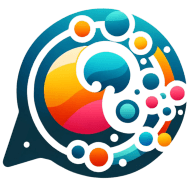8 Methods to Train New Team Members On Your Customer Relations Philosophy
Customer relations can make or break a business in today's competitive market. This article presents expert-backed methods to effectively train new team members in your customer relations philosophy. From experiencing both sides of customer interactions to field experience, these strategies will equip your team with the skills needed to excel in customer service.
- Experience Both Sides of Customer Interaction
- Pair Observation with Structured Analysis
- Frontline Rotation Builds Customer Empathy
- Demonstrate Real Impact of Customer Relations
- Simulate Student Experience for Teachers
- Role-Play Scenarios with Immediate Feedback
- Track Unspoken Elements in Customer Communication
- Field Experience Builds Customer Understanding
Experience Both Sides of Customer Interaction
When it comes to training new team members on customer relations, the most effective method I've found is to move beyond scripts and policies and get them to feel what it's like to be on the other side of the conversation. People don't truly internalize a philosophy until they experience it.
One exercise I use is what I call the "mirror conversation." I ask a new hire to role-play a customer reaching out with a frustrating issue, but with a twist—they're on the receiving end of a scripted, robotic response first. Then, I switch and give the exact same solution, but delivered with empathy, active listening, and personal acknowledgment. Afterwards, we pause and talk through the difference. The solution didn't change, but the impact was night and day. That moment of recognition—when they realize how you say something matters more than what you say—always lands deeper than any slide deck could.
I've found this approach rewires their perspective quickly. Instead of focusing on just closing tickets or fixing problems, they start to see themselves as trust-builders. The exercise reinforces that customer relations isn't a department—it's a philosophy rooted in making people feel valued.
What I learned over time is that new team members don't need endless lectures on values. They need visceral experiences that show them the stakes. If they can remember what it felt like to be dismissed versus understood, they'll carry that empathy into every future interaction.
It's easy to talk about "customer centricity" as an abstract value. The real breakthrough comes when people understand it's not about perfection—it's about connection. Once they feel that, no one needs to remind them of its importance. They live it in every call, email, or chat.
Pair Observation with Structured Analysis
Our most effective onboarding approach pairs shadowing with structured reflection. New team members spend their first several days observing our veteran staff handle actual customer interactions. These observation periods are followed by targeted discussions where we analyze what made certain conversations successful and how moments of empathy or clarity significantly influenced outcomes.
The training exercise that consistently delivers the best results is what we call the "role reversal." In this activity, new hires step into the customer's shoes while experienced colleagues play the company representative. This simple but powerful switch creates immediate understanding - they physically feel the impact of both thoughtful communication and poor service delivery from the customer's perspective. The insights gained typically stay with them throughout their career with us, reinforcing why our customer relations philosophy matters in every interaction.

Frontline Rotation Builds Customer Empathy
My most effective method is to put new team members directly on the frontlines with customers, even if just for a short rotation. There is no substitute for experiencing firsthand what it feels like to answer a customer's question, calm a frustration, or celebrate a win with them. One exercise we use is having new hires spend a day shadowing support calls and then taking on a few themselves with guidance. It quickly builds empathy, shows why our philosophy matters, and helps them internalize that customer relationships are not abstract. They are real people who remember how you made them feel.

Demonstrate Real Impact of Customer Relations
The first interaction a person has with us is a critical moment. It can be a cry for help. Therefore, my team needs to understand that our "customer relations" is a matter of life and death, not just a set of rules. I knew I had to find a way to train them that went beyond a manual.
My most effective method for training new team members is to start with the "why" and not the "how." We don't just train them on our phone system or our intake forms. We train them on the mission of our business and the human story behind their work. We make sure they understand that every single person who calls us is a person who is in pain.
The most powerful exercise we use is to have a new hire listen to a recording of a first phone call from a person in crisis. The recording is anonymous, but it's a powerful way to get them to understand the human side of their work. They hear the fear in a parent's voice, or the shame in a person who is asking for help.
My advice is simple: the most effective way to train a person is to show them that their work is a matter of life and death. You can't have a compassionate team if they don't understand the human story behind their work.
Simulate Student Experience for Teachers
We believe we teach people, not just Spanish. To train new staff, we run the "Student Empathy Journey." Teachers go through our full sign-up and trial lesson as if they were students. Afterward, they reflect on what worked and what didn't. Walking in a student's shoes turns customer experience from theory into something personal and real.

Role-Play Scenarios with Immediate Feedback
I throw new team members into real-world simulations from day one. One exercise I love is role-playing tricky customer scenarios with real-time feedback. It forces them to live the company's customer relations philosophy, not just memorize it. The result? They internalize our approach quickly, respond confidently under pressure, and start delivering the experience our clients expect from day one.
Track Unspoken Elements in Customer Communication
We place new team members in a listening exercise before they begin direct interactions. Each person shadows an experienced staff member during patient calls or visits but is instructed to track the unspoken elements of communication—tone shifts, pauses, and the patient's emotional cues. Afterward, they must describe what they believe the patient felt versus what was explicitly said. This activity highlights that strong customer relations rely less on scripted responses and more on recognizing and addressing underlying concerns. The reflection stage often brings clarity on how empathy builds trust faster than efficiency alone. Many new hires find this exercise eye-opening because it shifts the focus from delivering information to creating a sense of being heard, which is central to our philosophy.

Field Experience Builds Customer Understanding
It's easy to simply instruct new hires to be polite to customers and then provide them with a manual. However, for us, that's insufficient. Our customers are professionals who depend on us, so they require more than just a courteous interaction. They need a partner. My most effective method for training new team members on our customer relations philosophy is centered on building empathy, not just teaching policy.
The key activity that helps them truly understand its importance is a simple exercise I call "The Field Experience." Every new hire, from the person who manages our website to the one who packs the boxes in the warehouse, must spend a day out with one of our customers. It's a non-negotiable part of their training.
Here's how it works. A new marketing hire might spend a few hours at a customer's shop, observing them work and listening to them talk about their business. An operations team member might accompany a delivery to see the final step of the process. They're not there to sell anything or interfere; they're just there to listen and observe the customer's world. The goal is to witness firsthand the challenges our customers face every single day.
After their field experience, they must return and give a short presentation to their team. They have to answer a few simple questions: "What was the customer's biggest frustration?" "How did our product help them with a specific challenge?" and "What is one thing we could do better to help them succeed?"
This exercise consistently produces incredible results. It puts a real face and a real story to every single order and every single phone call. Our marketing team starts creating content that's authentic and speaks directly to a customer's frustrations. Our operations team becomes more careful with packaging because they've seen how frustrating a damaged part can be. The training builds a foundational level of empathy that a manual could never achieve, and it turns our people from employees into true partners in our customers' success.
My advice is that you can't just tell your team about your customer relations philosophy. You have to show them. Get them out of the office and into the customer's world. When they understand what your customers are up against, they'll naturally start to provide the kind of service that sets your business apart.





